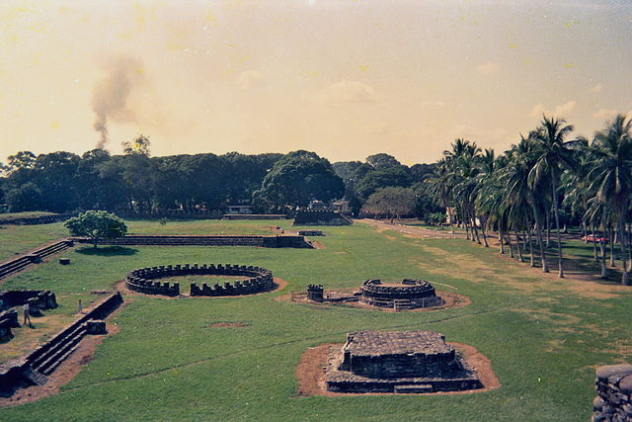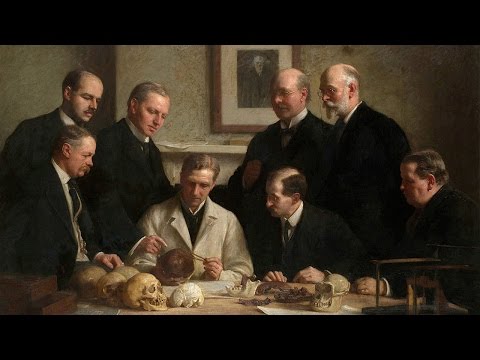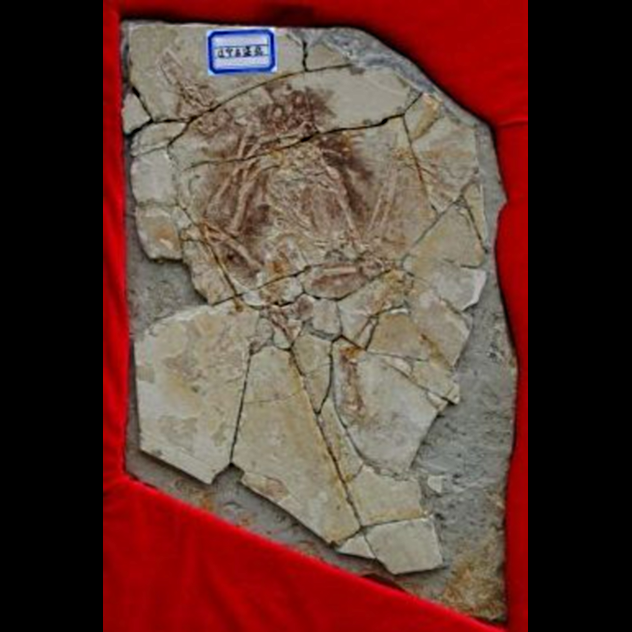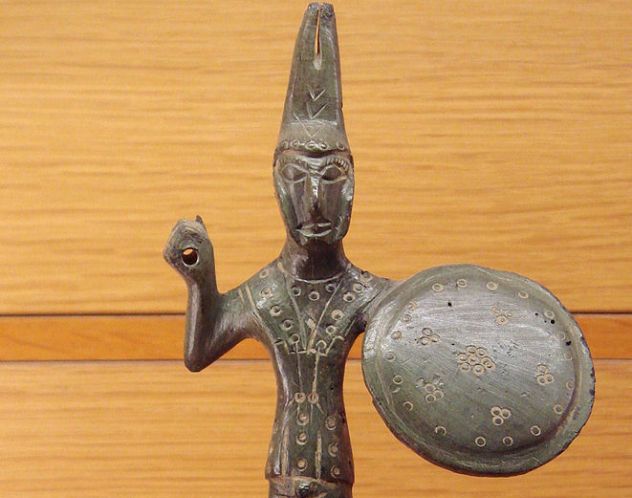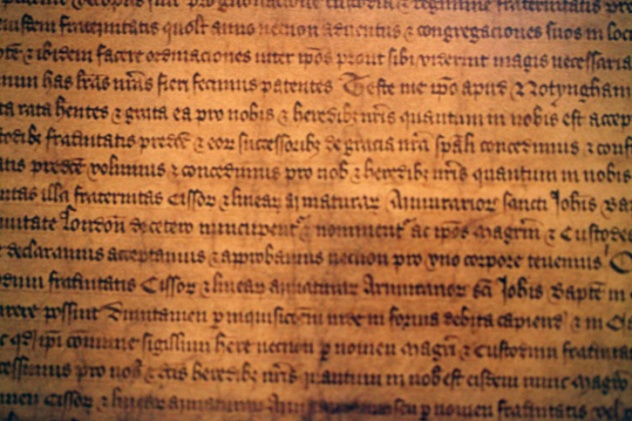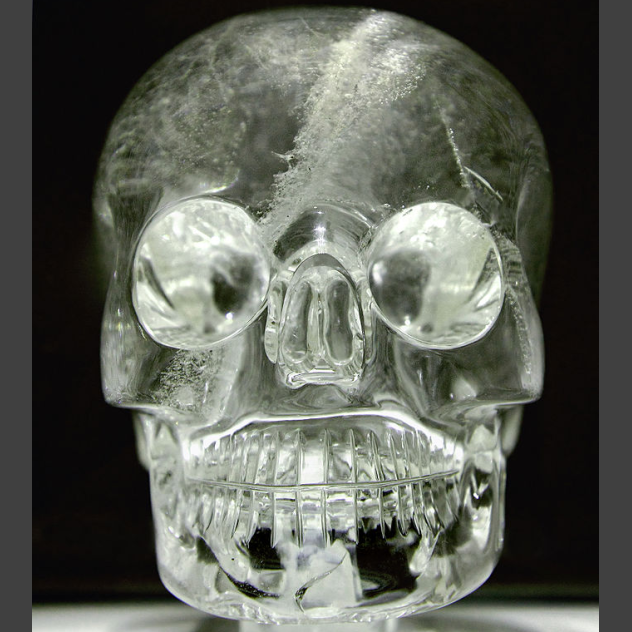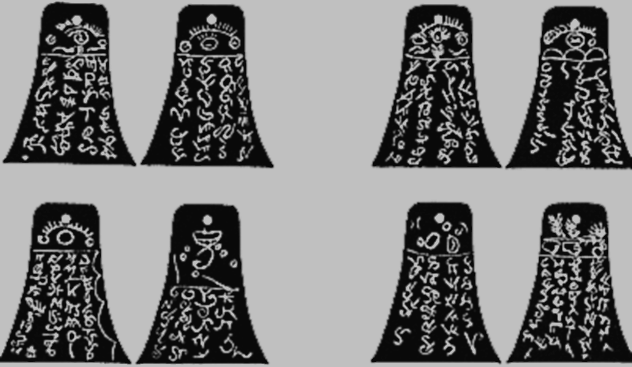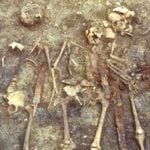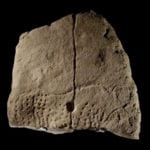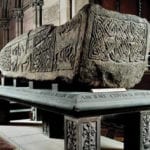10 Brigido Lara’s Pottery
When Brigido Lara was convicted of looting some of Mexico’s most valuable antiquities, he managed to get the verdict overturned with an odd defense: He wasn’t a looter at all; he was a forger. While he was in prison, he proved that the artifacts that he had been in possession of were his own creation by making more examples and having them presented to the same experts who had called the earlier pieces authentic. As more and more came out about Lara’s work, it became apparent that he had been at it for more than 20 years, making thousands of pieces that he saw not as forgeries, but as his own creative interpretations of ancient artwork. He’d made pieces in the style of the Maya, the Aztec, and most of all, the Totonac, a civilization which existed from the 7th to the 12th centuries. Arrested in July 1974 and freed by 1975, Lara’s talent not only got him a job, but it made a lot of people pretty uncomfortable. When he took a position with the Xalapa Anthropology Museum, he was authorized to continue his work. His pieces were signed and clearly marked as reproductions, but gradually, people learned what had happened to the estimated 40,000 pieces that he had already done: People, not to mention entire organizations, had spent a fortune on them. Lara’s “original interpretations” had ended up on display at the Metropolitan Museum in New York, the Saint Louis Art Museum, and as parts of incredibly expensive international collections. When the governor of Veracruz spearheaded a noble attempt at bringing native pieces back home, he bought a major collection from Sotheby’s. He returned with the items, briefly triumphant, only to have Lara tell him that he’d just bought a group of Lara originals at one of the largest auction houses in the world. As perhaps the ultimate irony, it’s suspected that the majority of what we think we know about the Totonac came from the study of Lara’s pieces.
9 Drake’s Plate
According to the story, Sir Francis Drake stopped in a California bay in June 1579. While his ship was being refitted, he was also in the process of claiming the land for his queen and country. As a marker, he had a brass plaque made and fitted to a post. In 1936, the plaque was supposedly found. Analysis of the metal supported its authenticity, and the plaque was acquired for the Bancroft Library at the University of California, Berkeley. It was a rare case of archaeological forgeries getting somewhat out of control. For decades, the authenticity of the plate was argued, By 2003, historians were finally pretty sure they had gotten to the bottom of it. The plaque was the joint work of a few members of the California Historical Society, an art dealer, and an engraver, and their only intended target was Herbert Bolton, director of the Bancroft Library and also a member of the California Historical Society. Bolton was obsessed with finding the plaque. He was known for telling all his students, and anyone who would listen, to be on the lookout for it. So his colleagues decided to make his wildest dreams come true. Using text from a 1628 account of Drake’s journeys, they had the plaque made, chiseled, heated, and aged. On the back, they even painted the letters “ECV” in fluorescent paint, marking it clearly (or so they thought) as a prank. Before they could come clean, however, their practical joke had passed expert scrutiny with flying colors, and Bolton, along with historical society president Alan Chickering, were shelling out $3,500 to buy it for the library. Because everyone belonged to the same small group of professionals, a confession was difficult, so the forgers just let it all pass. For decades, the plate sat in a place of honor in the library, until those involved started dying. The last man who knew the truth, art dealer Lorenz Noll, typed and signed an affidavit in 1954, swearing that the plaque was a fake. In the meantime, they had watched their forgery set off a 50-year archaeological debate over Drake’s course up the coast of California and even take center stage at the 1939–40 Golden Gate International Exposition.
8 Charles Dawson’s List Of Fakes
Charles Dawson’s name is most well-known in connection with the Piltdown Man. In 1912, the amateur archaeologist released his findings on a skull that he believed was the long-lost “missing link.” It wasn’t until 1949 that further testing proved that the so-called Piltdown Man was much younger than claimed and that it was also a combination of a human skull and an orangutan’s. The fake skull set British paleontology back decades and did irreversible damage to the credibility of the Geological Society. The identity of the skull’s forger has been debated for a long time. Dawson’s name has always been accepted as a part of the hoax, but it was also generally believed that he wasn’t capable of pulling it off by himself, at least until his real life’s work came to light after his death in 1916. Dawson wasn’t just involved in one shady but epic scam; he was a career hoaxer. He was ultimately linked to 38 more “artifacts,” ranging from ancient hammers and statuettes to axes and Roman tiles. Described as a serial forger, he was also a serial finder, conveniently stumbling across many of the artifacts that he’d made and then planted. He’s even been linked to the forging of records regarding rare bird sightings in Sussex, forcing historians to throw away years of tainted records. He “discovered” horse skulls that bore traces of horns, a completely new fish that was a cross between a goldfish and a carp, English Channel sea serpents, and rocks that hid petrified toads inside. However, it’s still not clear-cut as to who was behind the Piltdown Man. There are theories that Arthur Conan Doyle was involved, wanting to get revenge on a scientific community that was operating with no regard for religious beliefs. There’s also Martin Hinton, from the Natural History Museum, who was found in possession of materials like those used to fake the Piltdown Man. Or there’s Teilhard de Chardin, a Jesuit philosopher who was also dead set against excavations that went in the face of religion. Dawson, the man who everyone sort of agrees had something to do with it, did some rather expensive damage to the British scientific community. The cost wasn’t financial, but rather in credibility, especially considering that, upon closer examination, the forger wasn’t even that good.
7 Archaeoraptor
The so-called Archaeoraptor was “found” in 1999 and confirmed as a hoax in 2002. Exposed by the scientific journal Nature, it didn’t take long for scientists to realize that it wasn’t the proclaimed missing link between birds and dinosaurs that it had been advertised as. It wasn’t quick enough, though, and an unsuspecting, perhaps overly optimistic buyer had purchased it for $80,000. Coming from Liaoning Province in China, Archaeoraptor was hardly evidence of an evolutionary stage between birds and dinosaurs. CT scans proved that it was the remains of an early fish-eating bird that had been glued to the bones of a small dromaeosaur. Strangely, the mash-up that was called Archaeoraptor was made from the first known examples of the two species that were combined to create the creature, an irony that we’re pretty sure was lost on the buyer. The pedigree of the specimen made it seem believable, as it came from an area that’s been credited with providing some intriguing evidence for the bird-dinosaur link. The fossil was one of many that have made it out of China. It’s illegal to export fossils uncovered in the region, but with a thriving black market, it’s not surprising that it happens. The questionable practice of selling fossils on the black market brings up an ethical question: For some workers, gluing bits of ancient bone together might not be so much forgery as an attempt to make money that’s needed for survival. They’re poorly paid and (according to some) forced to turn to the black market to make a living. Forged skeletons like Archaeoraptor force paleontologists to look at all of the evidence that’s come out of the area with a skeptical eye.
6 The Etruscan Warriors
In 1961, New York’s Metropolitan Museum was forced to admit that they’d made a mistake, and the life-sized, Etruscan warriors that they’d put on display were fakes. (The statue pictured above is real.) In retrospect, there were a few telltale signs that should have hinted that the statues, reportedly excavated in pieces from where they’d been buried for 2,000 years, were not what they seemed. Experts had commented on how impressed they were that the statues were still so brightly colored after all these years, and they also made observations on how the statues would have been impossible to construct in a single piece. That’s because they weren’t. The statues were made by Italian forgers Riccardo Riccardi and Alfredo Fioravanti, following in the tradition of a long line of Italian terra-cotta forgers that began with the Pirellis, who figured it was easier to make a whole new sarcophagus and sell it rather than restore the one that had actually been found. The forgers even set up a studio in a logical place for excavating terra-cotta warriors, and it wasn’t long before terra-cotta plaques, made by Pio Riccardi (Riccardo’s father) began showing up on the market. Supposedly, they came from an Italian temple (which must have been huge to have all those terra-cotta figures) that no one else seemed to know anything about. Riccardi and Fioravanti decided that they were going to fabricate their greatest work yet—a life-size terra-cotta warrior. Since they didn’t have a big enough kiln, they broke the statue into pieces before firing it, knowing that any damage would be attributed to its supposed age. They made it, they painted it, and they sold it to the Met. Having their statue accepted as authentic, they went on to make a giant, 1.4-meter-tall (4.6 ft) head. Later, another statue showed up, this time almost twice life-size. The three pieces went on display in the museum in 1933, and there was a lot of speculation that they were fake. In 1955, one critic even claimed that they were obvious forgeries, made with ground-up beer bottles. (They weren’t.) In an attempt to put an end to the doubts, the statues were subjected to extensive testing, and it was found that not only was there no way they could have been fired as a single piece, but that the paints used were pretty modern.
5 Moses Shapira And Deuteronomy
Moses Shapira started out as a reputable antiquities dealer, known to museums in England and in Germany as someone who, through his extensive travels, was good at finding previously unknown sources of ancient texts. By 1883, the British Museum used him regularly for acquiring priceless artifacts and manuscripts. In July of that year, though, a weird series of events began that ended in suicide and mystery. Shapira brought British experts a manuscript that he claimed was a never-before-seen version of Deuteronomy. The scroll consisted of 15 pieces, and they were said to have been very different than the accepted version. Experts eventually denounced it as a fraud, accusing Shapira of doing little more than writing a bad translation on some parchment and trying to pass it off as real. Shapira accused the experts, including Biblical scholar Christian Ginsberg, whom he’d worked with for more than a decade, of ruining him and committed suicide six months later. The manuscript, originally offered for £1 million, was bought at an auction after his death for little more than a few shillings. Shapira claimed to have obtained the manuscript from a group of Bedouins in 1878. While it was originally claimed that it was impossible for such a parchment to have survived in that climate for so long, the finding of the Dead Sea Scrolls proved otherwise. Germany declared it to be a forgery first, before Shapira even got the verdict from his British contacts. That verdict was confirmed by a French archaeologist with a record of snagging precious artifacts from other institutions and taking them back to France. Shapira had dealt with the Frenchman, Clermont-Ganneau, before, when several artifacts sold to a German museum were declared fake. After only a brief examination of the pages, Clermont-Ganneau publicly declared them fake. By the time Ginsberg had declared the manuscript fake, he had been firmly cemented in the mind of the British population as a defender of the truth, a diligent and steadfast public servant who would root out fraud at any cost. Letters and journal entries suggest that by taking as long as he did to reach his verdict, he was milking his image, as well as the public’s interest in him. Since then, the manuscript has disappeared. Shapira’s role in the whole thing remains unknown. It’s unclear if he was the forger or if he was conned by his sources, although there are claims that his trade was definitely not legitimate and that the Berlin Museum bought more than 1,700 forgeries from him in the 1870s.
4 Lead Books Of Sacromonte
Between March 1588 and April 1595, 22 lead tablets were found in the hills around Granada, Spain. Inscribed in Arabic and translated by Church officials, the tablets seemed to contain epic pieces of Christian text, including a letter from San Cecilio, patron saint of Granada, and the prophecies of John the Baptist. According to the texts, Cecilio brought them to Granada just before he was martyred, giving the area a seemingly definite connection with a saint. The tablets were put on display, but more and more people spoke out with their doubts about the authenticity of the plates. Debates raged for the next 150 years, until the plates were finally sent to Rome and denounced by the Pope as containing false doctrine. That was in 1682, and the plates were largely forgotten and buried in Vatican archives until 1999. After being found again, they were returned to Granada the next year, reigniting the mystery. It’s generally accepted today that the lead plates probably weren’t contemporary with San Cecilio’s first-century journey into Spain, but it’s not known for sure just who as responsible for the forgeries that helped cement Granada’s Christian history. With the recovery of the plates, the developing theory is one that came with the light of retrospect. When the plates were first found, Spain was in the process of exiling their Moriscos (Muslim citizens). It’s thought that the Moriscos created them, and scholars even think they know who—counterfeiters, doctors, and translators Miguel de Luna and Alonso del Castillo. A reexamination of the text seems to make it clear that there is deliberate ambiguity in them, designed to make the same text acceptable to both Christians and Muslims in an attempt to bridge an otherwise insurmountable gap. There are frequent phrases that reveal a Muslim influence to the text, such as references to Jesus as the spirit rather than the son of God. A text with similar themes was found later circulating among the exiles, but it didn’t have what was thought to be the desired effect in Granada, only strengthening their Christian beliefs. The lead books are still kept at the Abbey of Sacromonte in Granada.
3 Eugene Boban And The Crystal Skulls
The legend of the crystal skulls is one that has long captured the imaginations of believers and skeptics alike. There’s one man who seems to be in the middle of the controversy—and the sale of the supposed artifacts. Eugene Boban was a Frenchman who spent around 20 years in Mexico before returning to France with some lofty claims. Boban had been tasked with the responsibility of gathering pre-Columbian artifacts for exhibition in Pars, and he bought and sold antiquities of all sorts from his establishment in Mexico City. His sales records and catalogs indicate that he was no small-time player. He was familiar with the antiquities he was selling and had firsthand knowledge of archaeological sites. Oddly, some of his catalogs include items that he acknowledges are fake, up for examination and sale with the goal of unmasking the fraudsters. Also listed in one of his catalogs (as his most expensive item) is a crystal skull. While denouncing other archaeologists, who most definitely didn’t find any crystal skulls as a part of their excavations, Boban continued to try to sell his large one, along with several smaller versions. Before Boban had even attempted to sell the skulls to the Smithsonian, they had already received warnings that he would try to do so—and that he wasn’t to be trusted. Boban made numerous attempts to sell his skull, which eventually made it into the British Museum after being called an outright forgery and fake by the National Museum of Mexico. He was also suspiciously connected to the appearance of a number of smaller skulls, most about 5 centimeters (2 in) tall, making him a likely player in one of the most hotly debated artifacts to come out of Central America.
2 George Hull And Solid Muldoon
If the name “George Hull” sounds familiar, it should. He’s the man behind the Cardiff Giant. Supposedly found by a couple of people digging a well in Cardiff, New York, the stone giant gained worldwide notoriety when it was claimed that they’d found the petrified body of an ancient giant. That giant was, of course, the brainchild of Hull, a cigar maker whose cousin promptly set up a tent and started charging people admission to see him. What worked once might work again, and in 1876, Hull gave it another try in Colorado. The clay-and-plaster man that would become known as Solid Muldoon was unearthed in Beulah, Colorado, in September 1877. Hull added a few things this time around. When it was dug up, Solid Muldoon’s head snapped off, conveniently displaying what looked like vertebrae. He also added a monkey’s tail, leading to the claim that not only was it the petrified remains of a giant, but the remains of the missing link. People became suspicious, though, especially when they saw that the supposed excavation site had no hole. Suspicions grew even more when almost immediately after the unveiling, P.T. Barnum showed up. Barnum and Hull were in the scam together, with Barnum helping to pay for the giant stone man and getting a 75-percent interest in whatever profits were made from the exhibition. His $15,000 investment ended up in his New York Museum of Anatomy, where he continued to fleece paying customers until one of their collaborators broke the story.
1 The Kinderhook Plates
Perhaps unsurprisingly, when Joseph Smith claimed to have translated the basis of the Mormon religion from some mysteriously appearing—and then disappearing—gold plates, there were skeptics. In 1843, a group of those skeptics decided they were going to call him out on what they thought was a clear fraud by creating some forgeries themselves. To this day, no one can decide whether or not it worked. The Kinderhook plates were a series of six plates covered with strange writing, named for Kinderhook, Illinois, the town they were excavated in. They were said to have been found buried with the skeleton of a giant, clutched to its chest. Accounts accept that they were presented to Joseph Smith for a translation, but things get a little murky after that. According to one account, Smith claimed that the tablets said that the person who had found them was a descendant of Ham, and the rest of the as-yet untranslated writings were a history of that person’s family. According to an article published in Times and Seasons, a Mormon newsletter, there was hope that everything in the Book of Mormon would be substantiated by the translation of the plates. Journal entries from Smith’s secretary indicate that he claimed to have translated part of them, which is where he got the information about the descendant of Ham. For decades, everything was all right. There were some confessions to the creation of the archaeological forgeries, but the faithful believers wrote those confessions off as hoaxes until 1980, when forensic examination proved that the only remaining Kinderhook plate was made in the 19th century. This was clearly a problem, and Smith’s secretary, William Clayton, was the culprit. Originally, Clayton’s writings were taken as proof that Smith translated the plates. Once they were outed as fake, Mormon scholars began to pick apart his credibility, saying that he simply interpreted Smith’s words incorrectly, recorded them incorrectly, or outright just made it up. Today, one of the default beliefs is that Smith never even attempted a translation, recognizing the forgeries for what they were. Read More: Twitter
